EDUCATION FOR TODAY AND TOMORROW






Crabtree Publishing has been bringing educators quality educational books for over 44 years! Developed by educational

With phonics at the center of the elementary Language Arts curriculum, beginning and emergent readers should be able to recognize, understand and apply phonics concepts as they learn to read. Applying knowledge of consonant and vowel sound and blending syllables in words will prompt students to decode words as they continue to build their reading skills.




Crabtree Little Honey Phonics Books collections have been developed by early learning consultants to engage beginning readers and provide support for teachers and caregivers to aid in reading success. With bright and colourful photos and illustrations, the books in the Crabtree Little Honey collection reinforce phonics understanding through practice and repetition to help students learn to read with confidence Learning activities in each book support comprehension, reinforce letter-sound connections, and encourage further phonics awareness by asking readers to apply their phonics skills in other language arts strands.
New to the Crabtree Little Honey collection, the My Decodable Readers series features entertaining illustrated stories to engage beginning readers while supporting them with learning resources and bonus content. These books have fully teachers can access free downloadable Teacher Notes for ease of instruction.
Books are available in print and ebook formats as well as Read-Along ebooks, with word-by-word text highlighting and engaging narration to help support fluency Learn more about this new phonics series in the Crabtree Little Honey Books collection at www.crabtreebooks.ca Crabtree Publishing is a trusted source for nonfiction and fiction books for grades PreK-9+.
www.crabtreebooks.ca T: 1.800.387.7650 • F: 1.800.355.7166






Funny illustrated stories engage beginning readers while supporting them with learning resources and bonus features. Fully decodable text features high-frequency words, and words with different sounds combined with selected consonant letters. Downloadable Teacher Notes available.















Reading Level: Grade 1 Interest Level: Grades PreK-2 24 pages, 6 x 8”, full colour


New Zealand’s an awesome place to live and teach.
If you’re an elementary, secondary or early childhood education teacher thinking about taking your skills to another country, we should be top of your list.

You’ll love it here. The natural environment is stunning, the laid-back Kiwi lifestyle is friendly and welcoming. If you like surfing, snowboarding, climbing, hiking or biking, you’re surrounded by opportunities. Even in the middle of our largest city, you’re still close to the beach & bush. Love eating? This is a foodie’s paradise. Into music, film and creativity? Same!
To make it easier for you to get here soon, there’s a special grant available of up to $10,000 NZD to help with moving expenses.
So, go on.
Scan the code to find out more
PUBLISHER AND EDITOR Wili Liberman
MANAGING EDITOR Lisa Tran ASSOCIATE EDITOR Raenu Sarathy
ASSISTANT EDITOR Kelsey McCallum
CONTRIBUTORS

Jill Golick Anita Townsend Richard Worzel ART DIRECTOR Pauline Lopez
JUNIOR GRAPHIC DESIGNER Amos Chin
EDITORIAL ADVISORY BOARD Bernice Slotnick Teacher (Retired)
John Myers Curriculum Instructor, OISE (Retired)
Rose Dotten CEO and Head Librarian, Shelburne Public Library
TEACH is published by 1454119 Ontario Ltd. Printed in Canada. All rights reserved. Our contact info is: 1655 Dupont St., Suite 321, Toronto, ON, M6P 3T1 E: info@teachmag.com T: (416) 537-2103. For subscription info, visit shop.teachmag.com. Unsolicited articles, photographs and artwork submitted are welcome but TEACH cannot accept responsibility for their return. Contents of this publication may be reproduced for teachers’ use in individual classrooms without permission. Others may not reproduce contents in any way unless given express consent by TEACH. Although every precaution is taken to ensure accuracy, TEACH, or any of its affiliates, cannot assume responsibility for the content, errors or opinions expressed in the articles or advertisements and hereby disclaim any liability to any party for any damages whatsoever. Canadian publication mail sales product agreement No. 43579512. ISSN No. 1198-7707.
The first retrospective is on this column I penned 30 years ago. Today I find myself in disbelief at how so much has changed since then, yet how many things remain the same. Educators are still frustrated. Governments continue to under invest in education. Reading and literacy still remain top concerns, as evidenced by the many articles that are continually contributed to TEACH on these topics.
This year marks the 30th anniversary of TEACH Magazine. The publication first began in 1993 with the goal of providing an independent, national magazine on education, and today that is still our primary objective. We’ve accomplished a great deal more than I ever imagined when first starting off on this venture, even branching into media development through TEACH Media, a subset of TEACH that focuses on digital resource production. Our aim, however, remains the same: to offer engagement, ideas, tools, and resources to you, the professional educator.
This issue provides a look back at some of our accomplishments over the years. It is meant to be a retrospective of our greatest hits, as well as a celebration of both where we started and of what lies ahead on this fascinating journey. Thank you for being a part of our forum, for contributing, and for joining us these past 30 years.
The more I read and discover about what we contentedly call education, the more I wonder from where the iconoclasts, intellectual, and creative rebels of the future will emerge. Much mileage has been generated recently out of facts and figures that disparage the public education system. We have been told that the high school dropout rate is 30%, although we aren’t told that a significant portion of those drop back in within five years. We have been told that relative to the percentage of Gross Domestic Product spent on education, Canada still ranks low on the global academic totem pole. We have been told that literacy and numeracy levels are deplorable. Depressing phrases all.
Professional educators must be frustrated. Frustrated that they can’t do more. Frustrated that their hands may be tied. Frustrated that there isn’t more time and resources. Frustrated that everyone from parents, kids, politicians to business and industry leaders are critical of the educational establishment. Though some criticism is undoubtedly justified.
Although Canada still ranks on the lower end for GDP spend, it now ranks very high for quality of education.
While it’s certainly not surprising how far EdTech has evolved and how it has become more integrated in our lives, now it is time for the focus to shift to ensuring device equity and affordability for all students.
We urge you to vent your frustration and your energy in a constructive way. Welcome to TEACH Magazine, your open forum for discussion and an exchange for ideas. When we say “your” forum, that is exactly what we mean—for you, the professional educator.
Our aim is to provide you with useful information and insight into some of the things taking place in the K to 12 world across the country and even, internationally. It is a daunting task. To tackle it, we need to hear from you.
What are your interests, concerns, and passions? Do they include large issues like standardized testing or destreaming? Are you interested in specific financial advice, travel destinations, teaching tips, a special book, software products, or the latest developments in cooperative learning? Any or all of those are possibilities here.
We’ve taken a fairly well-informed stab at devising topics that will involve you in these pages. In addition to the bright mix of columns and articles, we encourage you to have fun with the CURRICULA section—an eight-page reproducible called the “Design Your Own School Project.” The next issue of CURRICULA covers the topic of Media Literacy in a project formed around the theme of “Heroism.” Look also for two other sections of the magazine, The Exchange and Up & Comers.
I began by wondering about our future iconoclasts but certainly there are those, likely the majority, who have the right to attain skill levels high enough to acquire a decent job and entertain a reasonable lifestyle. Is their future in jeopardy too? Without a hint of irony I can say there is much controversy and disparity inherent in the field of education.
However, looking at all the positive initiatives we’ve come across that are on the go, seeing the potential power of integrating existing technologies and information providers, listening to the debates and discussions, makes us realize that no matter what, education is a process that arouses passionate interests. Some may say that the future of our country and the democratic institution rises or falls on the effectiveness of education. But it strikes me too, that those involved with education form a community whose goals and aspirations are aimed toward the betterment—physical, intellectual, and spiritual—of children.
Our aim is to provide you with appealing articles, columns, departments, and exercises that reflect and stimulate your interests, needs, and desires. We invite you to participate in what we feel is a noble quest.
WILI LIBERMAN PUBLISHERWe created the Classroom Perspectives column for this reason and continue to be inspired by the many stories that you share with us.
Despite the unfortunate lack of mental health supports for kids in schools, and for society in general, we’re encouraged by the increasing number of conversations around mental health—both within and outside of the classroom.
This article remains as fresh today as when it was first published in 2008. Its popularity isn’t a mystery; many teachers are still facing the same obstacles with parents that Richard Worzel discusses here. He states his views in an unflinching manner, laying out an extensive list of reasons why parents tend not to respect teachers. He also warns of the long-term societal consequences if attitudes and actions don’t change.
Ironically, because of COVID, many parents supplanted teachers due to the lockdowns and hybrid learning that took place. In doing so, parents received firsthand experience on the role of teachers and the challenges they face in educating our children. Let’s hope that one of the lessons learned is empathy for teachers and the important work they do.
Education underpins everything, and those who teach our children play one of the most important roles in society. If they are not allowed to do so in an engaging way, we all suffer. Richard Worzel’s commentary highlights why teachers are deserving of respect from everyone.
–Wili Liberman, Publisher
Originally published in TEACH Magazine, May/June 2008 Issue
Many parents are friendly, supportive, and eager to work with teachers to make sure their children get the best possible education. But some parents seem to have a problem with teachers. They don’t display much in the way of respect, and the reasons often have nothing to do with the teacher involved. So, given that this seems to be happening more frequently, what are the causes of this lack of respect for teachers, and where is this headed?
Some of the older answers have to do with the perceived status of teachers, and one in particular is actually due to teachers’ success in doing their jobs. A century ago, teachers were almost certainly among the most educated members of their communities. This meant that they were, to some extent, looked up to because of their learning (although they were also looked down upon because they didn’t do “honest work”). Today, the education levels of teachers are perceived to be much the same as most of the community, in large part because so many members of society have finished high school, and even gone beyond. Accordingly, teachers are no longer looked up to because of their education. They are, however, still looked down upon, to some extent, because they don’t work nine-to-five, and they have all of those holidays.
Which leads to the next reason—parents do not truly understand what teachers do in the classroom. Everyone has been to school, and therefore everyone assumes they understand what goes on there, and it doesn’t seem that hard. You show up five days a week for six hours a day, talk for a while, and go home early. Never mind being able to get through to kids, never mind developing lesson plans and marking papers, never mind the difficulties of understanding how your students’ minds work, never mind the theory and (difficult) practice of pedagogy, and particularly never mind the rising administrative and safety hassles. It looks, from the outside, as if teachers have a cushy gig. Of course, if most parents were to try teaching for a couple of weeks, their perspectives might change— but the chances of that happening are pretty slim.
Politics can also be a reason why teachers receive less respect. Before the boomers, education was a political backwater. School board trustees were elected, it’s true, but few people knew anything about them, and fewer cared. Politicians at more senior levels of government had little interest in education, and little reason to pay attention to it. Once the boomers had kids in the system, all of that changed. Anything that’s important to the boomers (born roughly between 1947 and 1967)
becomes important to politicians who want to be elected, so politicians at the federal and especially the provincial level discovered education as a hot-button issue. Unfortunately, this attention did not prove to be benign. When a premier announces that he wants to be known as the “education premier,” it becomes incumbent upon him to make sure the province is very much involved in education. This has led to curricula and even daily lessons being dictated by bureaucrats in provincial ministries and as a result, the unique needs of the students has been disregarded. Most of these bureaucrats are long on ideas and theory, but very short on actual experience. Too frequently they follow the foolish direction of ignorant people.
Worse, when things are perceived to be wrong with the education system, scapegoats have to be found to deflect the blame from the elected officials who were so eager to grab the reins. Unfortunately, teachers make a convenient target. Again, never mind that the teachers are doing what the ministries of education are directing them to do. It’s an easy political move to paint teachers as lazy, and, by inference, at fault for the perceived ills of the education system. And a number of premiers of all political stripes have done just that, often deliberately picking fights with teachers to score political points, and to show how tough they are.
Next, parents and their attitudes have changed. If you got into trouble in class when I went to school, not only were you disciplined by the teacher (or worse, the principal), you got it double at home. That’s not always true today. Now many parents start with the assumption that their little darlings must be right, and therefore the teacher must be wrong. So they attack the teacher who had the temerity to

discipline, or even give a poor grade to little Suzy or Johnny.
The reasons for this are surprisingly complex. First, parents are pushed for time. Often both parents are working, or a single parent is trying to cope (typically) on her own, and parents sometimes have to work two jobs or more to make ends meet. The result is that parents are often tired, frayed around the edges, with lots of repressed anger, and they don’t have the patience to take a deeper look at what’s going on with their kids. Indeed, part of their overreaction may be due to guilt. Since they don’t spend enough time with or on their kids, they make up for it by trying to be good guys. This may mean allowing the kid to make the teacher the bad guy.
As well, some kids are ornaments for their parents’ egos. Children are sometimes seen as another possession, like the flashy car, or the fancy clothes, or the upscale cellphone. And you certainly wouldn’t allow someone to trash your car or your cellphone. How much worse then that a teacher would dare to diss your child, who is after all a manifestation of your very being, and a showcase for the superiority of your genes? In many ways, I feel bad for the kids of such parents who have to behave like good little ornaments. Or rather, I’d feel bad for them if they weren’t, typically, such pains-in-the-neck, because the same lack of time and ego manifestation also causes parents to fail in their duty to discipline kids.
Another issue is the fact that the parents are often spoiled children themselves, used to having their own way and not understanding why the world won’t just organize itself for their convenience. These people are rude, demanding, hostile to service people, and unfortunately, they view teachers as servants whose primary responsibility is to act as a nanny, and, oh yes, also teach something along the way. These parents will often blame teachers for the children’s lack of manners or discipline, completely ignoring the fact that this is their
responsibility, not the teacher’s. The result, of course, is that the children of such parents wind up being the spoiled children of spoiled children—a bad combination.
And the system works against teachers. Two generations ago, discipline could mean some form of humiliation such as, “Go stand in the corner,” a smack on the hand with a ruler, or even being sent to the principal for the strap. Today, all of these are considered Dark Age remedies, and teachers are almost powerless in matters of discipline. Worse, they often fear repercussions of even a mild rebuke. Since such repercussions can be anything from a verbal confrontation with an irate parent, to physical assault from either the parent or the student, threats of a lawsuit, charges of assault, or worse, sexual assault, the risks are high and the payoff is minimal. This means that the motivation for teachers to discipline at all approaches zero. And, perversely, this lack of desire to discipline counts against teachers, for they are perceived as being weak, irresolute, and shirking their jobs.
How will all of this play out in future? Not well, I fear. First, as successive generations start families later and later, the ability of women in their 30s or even 40s to get pregnant for the first time will decline. The result will be fewer and fewer children, who will be seen as even more precious, and will develop the kind of “Little Emperor” syndrome that has been discussed regarding the “lonely only” children in China. This will exacerbate all of the problems above.
Next, as competition increases for jobs and economic survival, and education is seen as a requirement and not an achievement, the value placed on education will decline in the eyes of the public, particularly below the college or university level. And I would not expect people, in this more competitive environment, to become more patient and spend more time understanding issues at school. Tomorrow’s parents are more likely to have less patience, be more frazzled, and less interested in their child’s issues—making them even worse as parents.
All of which sounds terribly dreary—and it is. But I will offer two thoughts in counterpoint.


The first is that schools and teachers should become proactive in describing the responsibilities of all parties, including (especially) the parents. They should have a clear set of guidelines about what constitutes acceptable behavior, what are the disciplinary consequences for unacceptable behavior, and describe the process parents must follow if they want to appeal a disciplinary decision. I would also make it mandatory for parents to sign an acknowledgement of these issues and invite them, through the PTA, to discuss and offer amendments to the process. This won’t solve the problems, but it may offer a means of defending a school and its teachers against parents who only want to complain and attack, especially if the school board is involved in the process.

The second counterpoint is as old as teaching itself. The work that teachers do is critical to the success of society, whether or not parents understand or acknowledge it. Teachers should enjoy as much satisfaction as they can from the accomplishments of the students they do reach because it is highly unlikely that society or a given set of parents will ever take the time to show appreciation.
So, on behalf of all the ill-mannered parents who don’t know any better or don’t bother to take the time, allow me to say what they should, but probably won’t: Thank you, for all you do. As one of my peers said to my favourite teacher, “You make your living by teaching, but your profession is humanity.”
RICHARD WORZEL is Canada’s leading futurist. He volunteers his time to speak to high school students for free, when his schedule permits.
Originally published in TEACH Magazine, July/August 2015 Issue
This article represents one of the most widely read pieces we’ve ever published. What do I think are the reasons for its popularity? When it was first published in the early 2010s, there were plenty of new and emerging educational technologies, but not many teachers were well-versed in managing a digital classroom. And despite the fancy features of these technologies, it was clear that strategies for classroom implementation were missing. This is something that the article’s author, Anita Townsend, wanted to address with an easyto-understand list of tips. Today, as EdTech becomes more and more sophisticated, the management of it also grows in complexity. Hence why this article is likely a perennial favourite, as educators continue to look for pragmatic and sensible advice.
–Lisa Tran, Managing EditorIn a traditional model of teaching, the teacher is the source of knowledge. Learning is based on one-dimensional materials that are directly connected to curriculum content and skills. Today’s resources, however, are digital, interactive, and visually rich; a stark contrast to rather lengthy text description of topics and themes. Students are now at the centre of their learning and use today’s technology and resources in ways very different from traditional learning materials. They access multiple sources, customize material to suit their needs, mix various media to create new learning, and then share it with unlimited peers through their social networking sites.
And as we transition from traditional teaching and learning approaches to digital and interactive ones, we need to carefully plan and prepare the learning environment. As good teachers have done for decades, good planning provides learning environments that enable students to successfully optimize their potential for success. Having a management plan is essential when using digital learning tools. This plan should cover components such as classroom organization, instructional strategies, technology availability, and time. The following are some suggestions on planning your digital classroom.
All of your students do not need access to devices all the time. Plan and be specific about what you want the students to use the technology for. What learning goals does the technology support? What is the best technology for specific learning tasks?
When you have a limited number of computers or devices available for group activities and students have to share, consider assigning specific roles to group members. If everyone has a specific job to do it is much easier for students to focus on the learning goal.
Arrange classroom seating so that it is easy for you to move around the room and get to students quickly.
Actively monitor student use of the technology. Walk around the classroom; be aware of which websites or apps students are accessing and how they are working together.
Provide students with clear guidelines on school policies and procedures for working with technology in the classroom. Every school should have an Acceptable User Policy on what constitutes proper behaviour when using technology. It is important to establish norms for student behaviour in your classroom within the context of the project. Have students participate in the development of the acceptable use and etiquette guidelines in your class.
Establish at the beginning of the unit how and where you want students to organize their data related to the project, such as naming, storing, and sharing files.
Establish a backup plan for those days when the technology or the Internet connection is not available.
Ensure the websites, learning platforms, and apps that you recommend to students are secure. Review which websites your students are recommending to each other.
Provide students with a rubric or organizer that clearly defines project expectations and also provides direct communication with parents about the project.
Post anchor charts that provide technology tips or software instructions, or put them in a binder near the computers. An evolving list of tips can be generated by the students as they work through the unit.
Review the learning material provided from manuals or teacher’s guides, and map the curriculum to several disciplines, including as many expectations as possible to cover and evaluate in the teaching of the unit.
The content and the lesson plans are a comprehensive resource, which should enable you to cover a selection of expectations from two or more curriculum areas.
Use the material to design and implement student learning that extends the curriculum content where and when possible.
Students are motivated and benefit from working collaboratively with their peers in a team or pairs. This type of learning requires new skills in cooperative work. Students need to learn how to get along, share, and learn from each other. Forming teams needs planning. It may be necessary for teachers to consider computer skills and the specific assignment when pairing students.
Digital learning materials are most effective when integrated into the typical instructional day as opposed to being used just during scheduled lab times.
As with any other educational resource, the use of the material should be mediated by teachers. Teachers’ responsibilities are not relinquished; instead, the teacher becomes a coach and mentor, using the majority of teaching time to provide instruction rather than large group lessons.
Make connections with the content in the online unit to information from other websites or apps that are relevant and timely.
Provide specific and descriptive feedback to students as they progress through the online material, just as you would with traditional material. Integrate assessment tasks, which provide for formative and summative assessments of the tasks in the unit.
Using interactive online materials will enable learning to become much more student-centred. Leave room in your planning for student inquiry and creativity.
Facilitate and encourage students’ use of primary resources by using online polling, interviews, and accessing photo galleries.
Take full advantage of student expertise. Students often know more than teachers do about a technology, and teaching someone else what they know is a great way to reinforce their own learning and foster a supportive classroom community.
Even though students will do much of their work independently or in groups, they will still need to learn the skills necessary to follow schedules and maintain deadlines.
Provide opportunities for students to connect with other students and to connect with experts around the world and then collaborate.
Just as students today share their expertise and knowledge readily with each other online, it is beneficial for teachers to form online support groups as well as the traditional face-to-face connections. Expanding your learning about technology integration can be done any time, anywhere, by joining an online educator community. Gone are the days when the only place to learn new teaching approaches was a workshop presented to a room full of people.
Different sources of technology will provide different types of access and various levels of uniformity. Good teachers never relied on one teaching resource or one teaching method. Likewise today’s teachers will never use a single technology in a single way.
ANITA TOWNSEND is an Educational Consultant and Former Principal at SCDSB.



























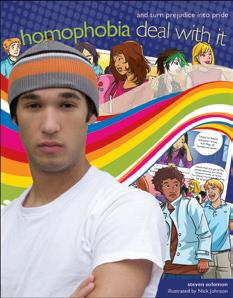


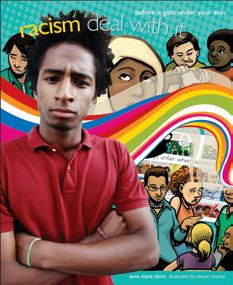

















































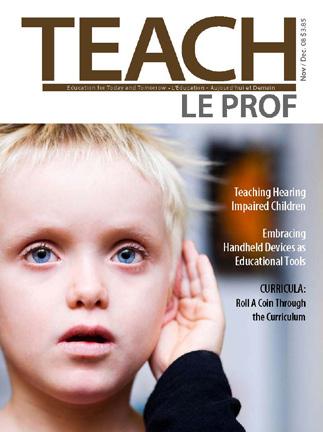


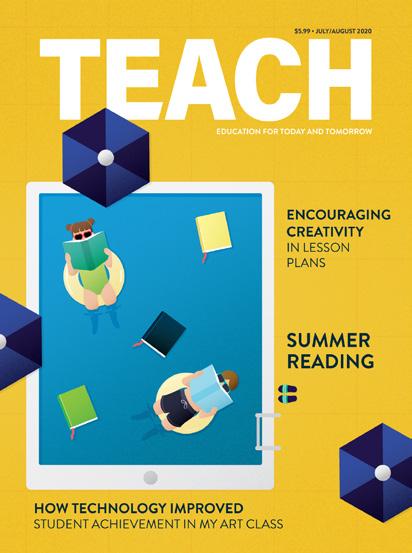



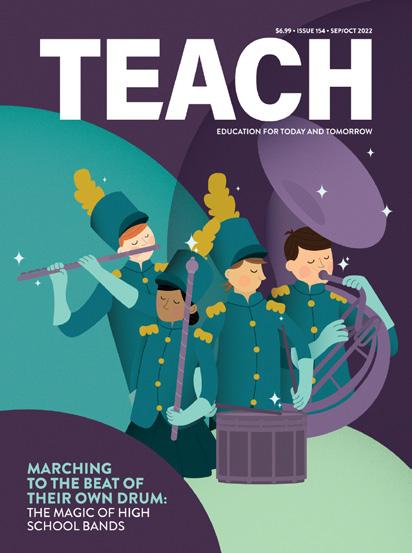

 By Jill Golick
By Jill Golick
This is the original CURRICULA that appeared in the very first issue of TEACH. Seeing that the school is an important part of a child’s community—perhaps the most important feature of their world outside the home—we thought it would be a fun exercise for kids to design their own school. To our surprise, this lesson plan quickly became a hit, with many teachers writing us (the old-fashioned way) to share that they had implemented the project within their classrooms.
Students responded enthusiastically, with many building models of their dream school from a variety of materials, including Lego, cardboard, clay, etc., while others opted for two-dimensional drawings of their concepts. The project was so successful that we were invited to one of the participating schools to see the models for ourselves. Some of the students created realistic models that addressed accessibility issues, crowding, heating and cooling, etc., while others took a more whimsical approach and designed swimming pools in every classroom and drinking fountains that dispensed chocolate milk!
Although written over 30 years ago, the idea of designing your own school is still very relevant, so we thought it would be interesting to share the lesson again and see how today’s kids respond—using newer technologies and addressing current issues, of course.
–Lisa Tran, Managing EditorThe Design Your Own School Project offers valuable learning experiences for students at every grade level. It gives students an opportunity to apply skills and thought processes learned in social studies to the most immediate world around them: school.
This project is appropriate for the following curriculum areas:
• Social Studies
• Language Arts
• History
• Drafting, Modelling, and Art
Students will:
• Learn about the range of activities that take place in a school;
• Learn about the people who use a school;
• Learn that models and maps are graphic representations of things in the real world;

• Learn that schools have changed over time;
• Learn that schools have an impact on the neighbourhood and on the environment;
• Learn that schools serve a broad community;
• Learn that government regulates education;
• Learn that education is shaped by economics, culture, geography, and other factors.
Students in Kindergarten, Grade 1, and Grade 2 can use the project as an opportunity to explore their school. The final project presentation may be a model or map of a school, or perhaps just one classroom in a school.
Students in Grades 3–5 can begin to think critically about change and improvement. Through research, they will discover that schools have not always had their current form, but have changed throughout history. By observing and recording use of different parts of their school, students may discover what areas are well-used and which ones need improvement. The final presentation might be a team effort, focusing on different areas of the school (library, gym, playground, lunchroom, classrooms, etc.).
Students in Grades 6–8 can adopt a global perspective on schools, considering the impact schools have on the environment, the interaction between the school and the broader community, and how special needs communities can be accommodated in the new design. In addition to the research methods used for earlier grade levels, students may want to conduct
interviews or write letters to get information from different parts of the community. At this level, each student or group should incorporate many attributes of a school into the final presentation.

Students in Grades 9–12 may choose to consider structural elements, site selection, incorporation of new technologies, the role of government, integration of arts and sciences, finances, and the very theory and practice of education itself. There is a veritable myriad of concerns that the planners, architects, builders, and educators must think about in designing schools for the future. Students have a wealth of issues and information from which to form interesting and innovative projects.
1
Introduce the project with a brainstorming session. Start by inviting the class to dream about what a school could be. Let imaginations run wild thinking about the possibilities, then direct students’ attention to the school building and design. For example, if students suggest having recess all day, ask how that could be encouraged by the way the school is built. A good answer might be by putting playgrounds in every classroom.
Change the focus of the brainstorming session. Ask students what a school is. What is its purpose? What is it intended to do? Why do people go to school? What are the different kinds of schools and why are there so many? If students were going to design and build a new school what would it be like? What do students think are important features of schools? What do they like about the school building as it exists now? What do they think should to be different?
Let students brainstorm. Be sure that someone keeps a record of the issues and ideas raised. After the initial storm of ideas has subsided, discuss them as a class. Divide the ideas and issues into categories. Some need further study and more information. Others can be incorporated into the final design later. You may want to display the notes from the brainstorming session on the classroom wall for students to refer to throughout the project.
Students can now go through the process of preparing the project and planning what to do at each stage. They can think about how much time each step will take. Start with the end: let
students know what form final presentations can take. Show students examples of blueprints, renderings, dioramas, models, and so on. Teachers at some grade levels may wish to have the whole class use the same final presentation method; if so, let them know what that method will be. Next, review the steps they must go through to get from the brainstorming stage to evaluation.
This step has two parts: first, students must decide on what to research and, second, how they must carry out the research. Rather than having each student research the entire project, you might want to divide the research up among the class members. Individual students or small groups can research different areas and then share the results with the class.

Through class discussion, help students set research goals that are appropriate to skill and grade level and fit in with your curriculum. Then help students figure out what research methods to use to find the information.
For younger students, the research questions may be quite simple. Who are the people in my school? What do they do? What are the rooms in my school? What are they used for? What is in the playground?
Find the answers through observation and exploration. Send small groups to explore different parts of the school. (An adult or older student can accompany them and record their findings.) One group can count water fountains, another can count bathrooms, several groups can list all the rooms in different halls, one group can go to the office to get a list of staff, etc.
Students in junior grades can start to think about change. How have schools changed historically? What changes can we make in this design to improve our school?
You can coordinate this research with your history curriculum. For example, if you are studying the Middle Ages, have students research how children were educated then.
To find out how to create a better school, junior students need to know how well the current school design is working. They will use a variety of active research methods, including observation and interviewing. For example, they may want to learn more about the use of the playground. Teams can be assigned to record how many students use each piece of equipment, how many use the fields, and so on. They could also make note of potential safety problems. Other students could interview a cross section of students, staff, and other concerned people about the playground, asking what they like and don’t like and what changes they might want to see.

Different areas of the school can be studied using similar methods: the halls, locker areas and bathrooms, libraries, labs, gyms, entranceways, etc.
In the intermediate and senior grades, students may want to find out more about other schools. Or they may want to look at their own school in a broader context: its relationship to the neighbourhood, its environmental impact, etc. The students may also want to think about how schools serve special needs communities. Students will use a variety of research methods.
The library will offer some books on schools around the world. Students may want to visit local schools for comparison purposes and to interview friends and neighbours who attend other schools about the advantages and disadvantages of their schools.

Through observation and interviews, students can find out more about their school’s impact on its environment. Some questions that students might want to consider include: How much garbage does the school produce? What methods are used to reduce school garbage output? How is energy used in the school? What energy-saving methods are in effect? What efforts are being made to make the school and school property environmentally friendly and wildlife friendly? Are there problems in the school’s relationship with its neighbourhood? Do students disturb home owners by cutting across lawns or through backyards? Do the school’s neighbours object to on-street parking by school staff and visitors? How do students and neighbourhood merchants get along?
Another topic for consideration is how the school serves special needs groups. Students can find out which groups currently use the school and when. They may also want to find out what other groups exist in the community, and whether any of those groups might want to use a newly designed school in the future.
Students in the senior grades can also contact trustees and school board officials to find out how decisions about school design are made.
After the research data has been collected, it is time to figure out what everything means. Data must be organized and analyzed. At this stage, students will review all the information they have in order to make decisions about the features they will put into their school designs.
Encourage students to start by reviewing their notes and putting all the bits of information about one topic together. Some types of information can be put into a graph or chart.
Once the material is organized, students should use it to make decisions about what features to include in their final design. Groups of students working together should set aside time at this point for discussion. Students can focus their
thought processes by asking themselves questions like: What must go into every school? What things about school work now? What do I want to change? What new features do I want to add?
At the end of this stage, students can make a list of the features they want to put into their new design.
5
Students can present their ideas in many ways, including through a model, diorama blueprint, rendering, drawing, etc.

6
Allowing students to participate in the evaluation process promotes independence and self-reliance. Students learn about the teacher’s thought process in evaluating work and their ability to meet the teacher’s expectations will improve. If you have time, conduct a private evaluation session with each student or group to discuss the project.
Have students focus their evaluation on three things: how good is the final result, how would they change the process next time to get a better result, and was the project a valuable experience for them?
Your evaluation should be based on the original goals. Evaluate how well students worked independently. Did they apply social studies skills and problem-solving methods? Were they original and creative in their approach to the project? Did they acquire new ideas about schools? Your evaluation may also include comments on effort, timeliness, presentation, and research. Help students to recognize what they did well and how they can improve their next effort.
Originally written by JILL GOLICK. Today, Jill works as a screenwriter, story editor, and creative producer.
TEACH launches first ever issue
Since its inception in 1993, TEACH has done more than just publish magazines. We’ve also created a variety of unique and engaging resources for students and teachers, such as graphic novels and coding games. Check out the following timeline to see some of the work we’ve done over the years!

Dairy Farmers of Canada poster series, which were distributed to schools across Canada
TEACH moves into its first office
“Canada Remembers” poster series, which was designed to teach students about the First and Second World Wars
Year of the Family special issue
Canada and the World, printed as a dual-language special issue
Roll a Coin Across the Curriculum, designed to teach students about the Royal Canadian Mint
TEACH creates assets for the Prime Minister’s Awards for Teaching Excellence program

10th year anniversary
TEACH produces the TV series Get Outta Town!, which looks at the lives of teens around the world
The Shadowed Road graphic novel

TEACH Media forms, a subset of TEACH that focuses on digital resource production

No Reason to Apologize graphic novel
TEACH celebrates its 30th year!

Mystic Learnings: The Group of Seven graphic novel
Graphic novel releases: Concept of One and Golden Boys
This year marks the 30th anniversary of TEACH Magazine and we’re very excited about it. The editorial and design team wanted to shine a light on the publisher and founder, who has worked hard to turn his single idea into a flourishing educational media company that we are all proud and grateful to be a part of. Here is an interview with Wili Liberman. We asked him how it all started, what things were like 30 years ago, and what the future holds.
At the time, my kids were young and just starting school. As an interested parent, and after spending months researching and talking to educators, it seemed clear there was no independent and national magazine providing broad-based coverage on education. Once that realization set in, the idea of TEACH Magazine was born.
THE MAGAZINE INDUSTRY HAS CHANGED EXPONENTIALLY OVER THE LAST 30 YEARS. WHAT WAS THE PRINTING PROCESS LIKE BACK THEN?
There were no such things as “digital” files or layouts 30 years ago. In fact, I was still using an IBM Electric typewriter. It had autocorrect and that itself was quite the advancement! (After that, I moved into the world of “hi-tech” and purchased an Apple Mac with 512 KB of RAM. That’s barely a fraction of the power of the average smartphone.)
Throughout the printing process, everything was done by hand. You put together a layout on a board and sent it to a film house to be processed. If revisions were needed, there was a technician called a film stripper who would manually cut out pieces using an X-Acto knife and then replace the bits of film. It was time consuming and costly, but that’s just the way things were.
All of the photographs used back then were original images—and all shot on film too. Stock photos were not common. I can remember the first time we put files on a CD-ROM to send to the printer, and that was seen as revolutionary.
TEACH began as a black and white print publication; we didn’t even have our own website. Naturally, the magazine itself began to change in appearance as we constantly looked for creative ways to present our content. Then, some years later, we made the leap into digital publishing. But I will say we’ve always stayed true to our print roots, which is something I’m proud of.
First, it’s a constant learning process, like going back to school. I find that really motivating and compelling. Second, we have provided tons of tools and resources to teachers, students, and schools, most of them free, and the positive feedback we’ve received has been extremely gratifying. It’s nice to know you can make a difference and that your efforts are appreciated. Third, the work is fun. It can be intense at times but it’s constantly changing, challenging, and evolving—never dull. Finally, we have a great team here and it’s a pleasure to work alongside them. I’m always reassured that challenges will be met as they arise and I enjoy seeing the creative solutions that our team members bring to the table.
AFTER PRODUCING TEACH MAGAZINE FOR THE LAST 30 YEARS, YOU MUST HAVE GAINED SOME INSIGHT INTO TEACHING AND CLASSROOMS. WHAT DO YOU THINK ARE SOME OF THE MAJOR CHALLENGES TODAY?

Schools are chronically underfunded, and this impacts everything from crumbling infrastructure to class sizes, resource acquisition to the number of classroom assistants, admin staff, etc. And yet, Canada still manages to have one of the best education systems in the world. That speaks to the commitment and resilience of frontline teachers. What affects education are the same issues affecting society. That is, technology, social media, demographics, immigration, special needs, and so on. The list is long and the conditions have unfolded over generations.
IN YOUR OPINION, WHAT DO YOU FEEL HAS CHANGED IN SCHOOLS AND WHAT HASN’T?
The integration of technology and technological tools— and the social impacts of that—is likely the greatest change we’ve seen over the past 30 years. What hasn’t changed is that technology cannot replace the classroom experience of real, human teachers. Technology might make some aspects of teaching more effective, but kids need to fully live that classroom experience, aided by capable and committed professionals.
Over the years, we’ve branched out from traditional magazine publishing into developing, I think, some amazing interactive digital resources, graphic novels, coding games, and videos. We plan to continue that trajectory and, in doing so, I think the future is limitless.

Check out the DFC Here for Tomorrow Scholarship,







Designed with the classroom in mind, this scholarship application can double as a curriculum-linked assignment.


Students are encouraged to uncover their interests & learn how they link to careers in agriculture & a sustainable future.


To learn more, visit: thinkAG.ca/Scholarships/DFC-Here-For-Tomorrow-Scholarship
Encourage your students to let their creativity shine!
Submission options can include an essay, video, or visual arts piece.




La procédure d’inscription à cette bourse a été imaginée pour pouvoir être réalisée en classe, dans le cadre d’un projet lié au curriculum.






Les élèves sont encouragés à identi er leurs intérêts et à découvrir les liens qui existent avec les carrières en agriculture et un avenir durable.
Pour en apprendre davantage, visitez: pensezagri.ca/fr-ca/bourses-detudes/plc-ici-pour-demain






Encouragez vos élèves à exprimer leur créativité!
Les demandes peuvent prendre la forme d’un essai, d’une vidéo ou d’une œuvre d’arts visuels.

















